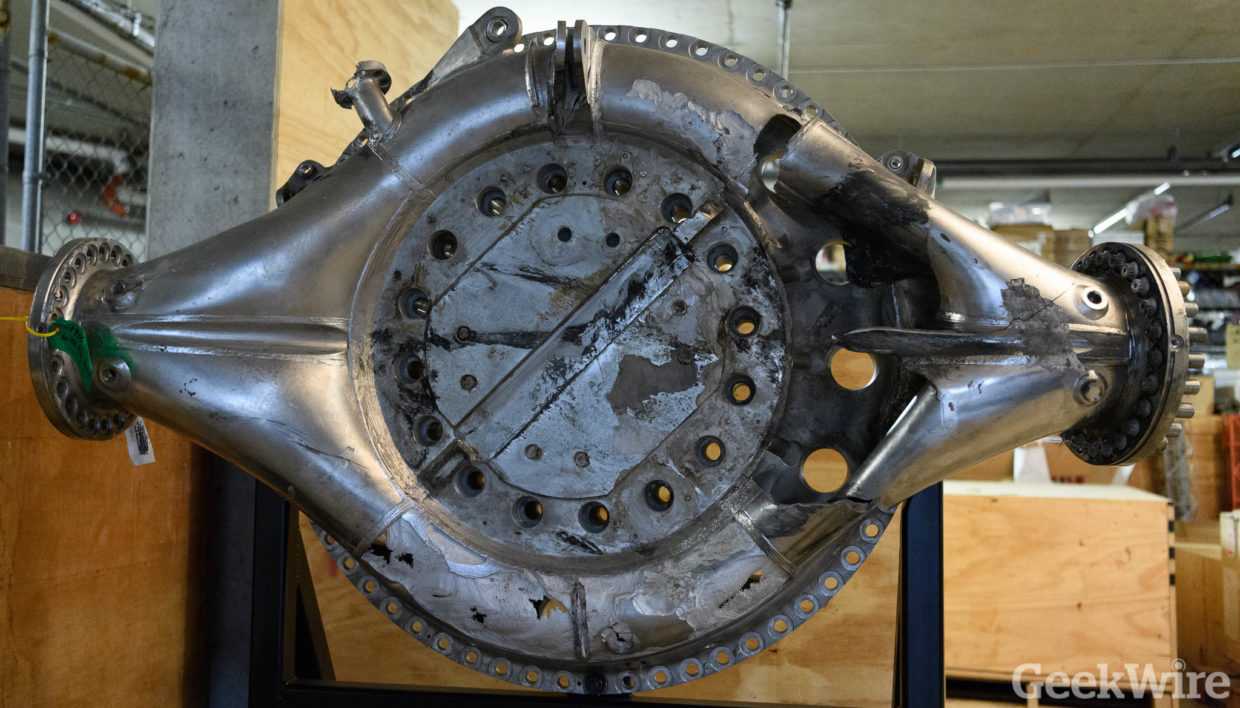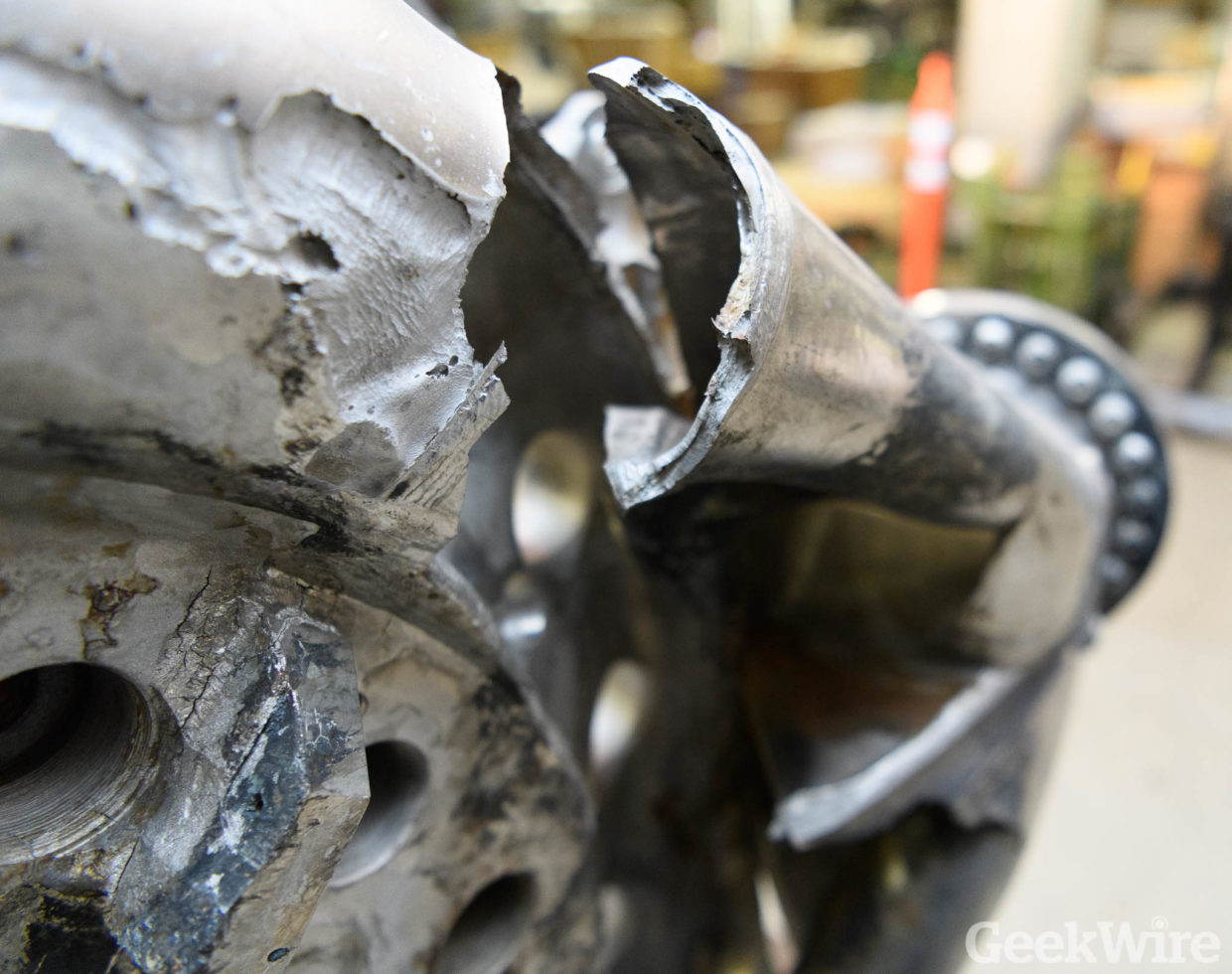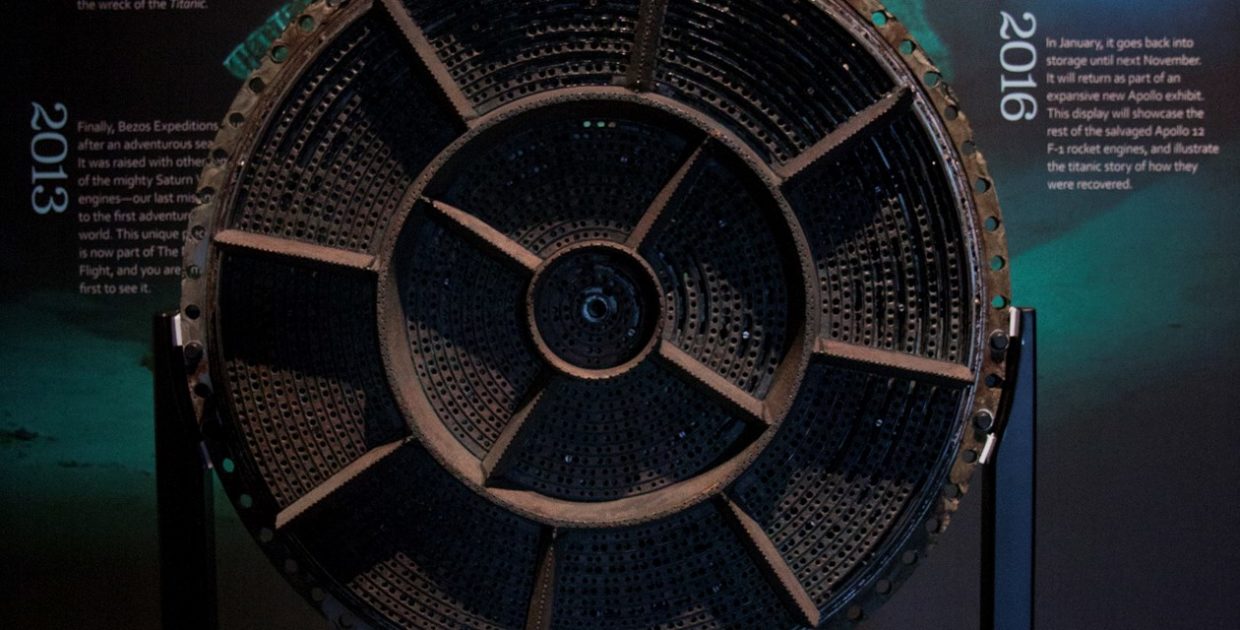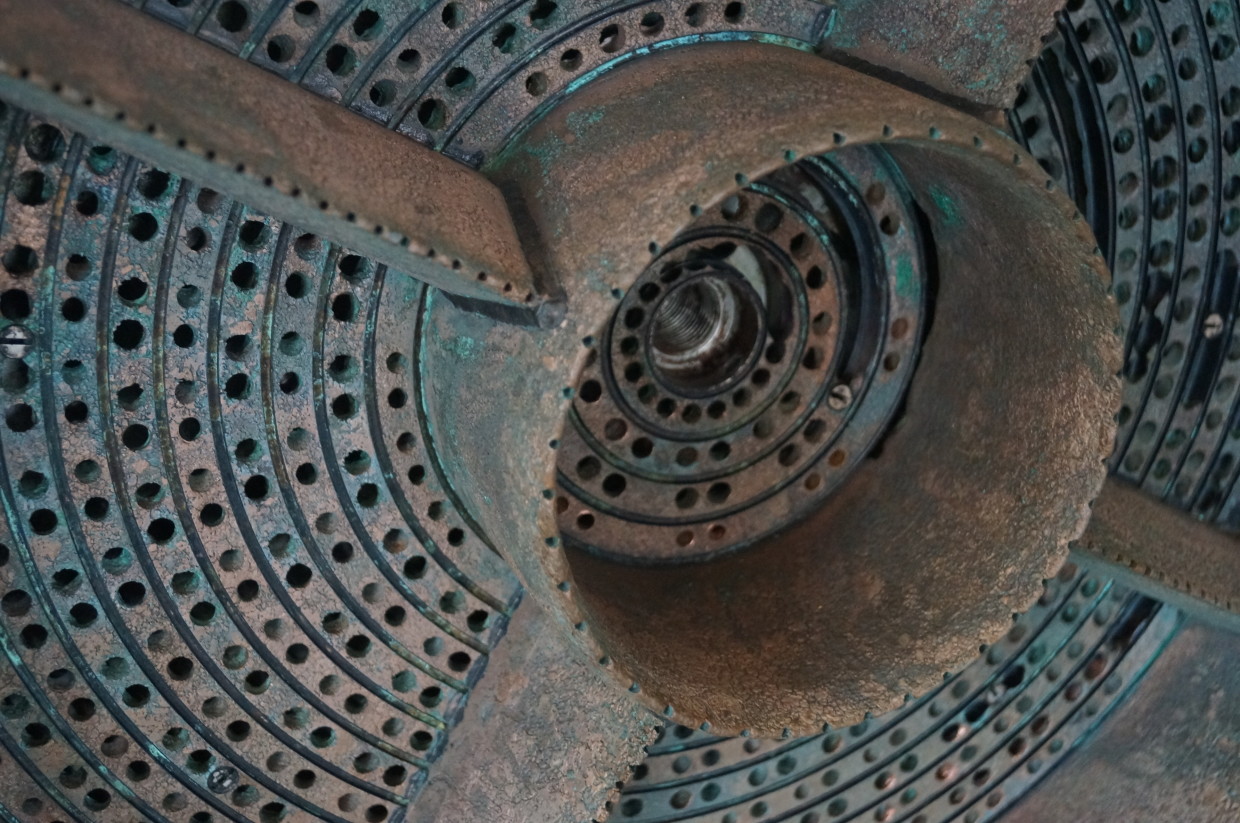It’s been almost a year since Amazon billionaire Jeff Bezos unveiled pieces of the Saturn V rocket engines that propelled Apollo’s astronauts to the moon – and now you can watch a video guide to the goodies, courtesy of Seattle’s Museum of Flight (and GeekWire).
Next spring, the decades-old artifacts will be among the highlights of a remodeled exhibit focusing on the golden age of spaceflight, which reached its climax with the Apollo moon missions.
But for now, they’re sitting in one of the museum’s secure storage areas, ready to be installed once the exhibit space is ready.
After each Saturn V launch, the rocket’s first stage – including its 19-foot-tall F-1 engines – fell into the Atlantic Ocean while the rest of the spacecraft powered onward. If anyone had been there to see the first stage’s plunge, it wouldn’t have been a pretty sight.
“When hot engines hit cold seawater, often the engines just exploded,” said Geoff Nunn, the Museum of Flight’s adjunct curator for space history (and your guide for the video tour).
- The Museum of Flight will display this thrust chamber from one of the F-1 engines that sent Apollo 12’s crew on its way to the moon in 1969. (GeekWire photos by Kevin Lisota)
- Hundreds of tubes ran through the wall of the F-1 engine’s thrust chamber as part of the coolant system. (GeekWire photo by Kevin Lisota)
- When the Saturn V’s first stage plunged into the Atlantic, the support structures for the F-1 engines snapped off, leaving only the welded seams behind. (GeekWire photo by Kevin Lisota)
- Serial numbers were used to identify which Apollo mission a particular part came from. (GeekWire photo by Kevin Lisota)
- The liquid oxygen dome was attached to the rest of the F-1 engine assembly. (GeekWire photo by Kevin Lisota)
- The LOX dome routed high-pressure liquid oxygen from the F-1 rocket engine’s turbopump to the injector, where it was mixed with RP-1 kerosene fuel. (GeekWire photo by Kevin Lisota)
- The LOX dome didn’t survive its ocean plunge unscathed. (GeekWire photo by Kevin Lisota)
- Corrosion left intricate patterns on the F-1 engine parts. (GeekWire photo by Kevin Lisota)
- This heat exchanger came from one of Apollo 16’s engines. (Geekwire photo by Kevin Lisota)
- An Apollo F-1 engine injector plate is already on display as a preview for the Museum of Flight’s upcoming exhibit. (Credit: Museum of Flight)
- A close-up view shows the rust on the recovered Apollo 12 engine injector plate. (GeekWire Photo / Alan Boyle)
Some big pieces did survive the splash, and drifted down more than 14,000 feet to the bottom of the sea. In 2013, Bezos Expeditions funded a salvage operation to recover the historic artifacts. Over the course of a couple of years, they were conserved in their mangled condition at the Cosmosphere International SciEd Center and Space Museum in Kansas.
The Smithsonian’s National Air and Space Museum in Washington, D.C., received artifacts from July 1969’s Apollo 11 mission, which marked humanity’s first journey to the lunar surface. Meanwhile, in Bezos’ hometown, the Museum of Flight received rocket engine components from other flights.
“Depending on how you slice it, we received hundreds of parts,” Nunn said.
The showcase components include the thrust chamber, liquid oxygen dome and injector plate from Apollo 12, which sent astronauts to the moon in November 1969. That’s a particularly fitting mission, because that’s when the moon rock currently on display at the museum was collected.

The components came from the No. 3 engine on the first stage – which suggests yet another Seattle angle. Nunn noted that this is the city where Seahawks fans are known as the “12th Man” and root for a quarterback who wears the number 3 on his jersey.
“If you think of the No. 3 engine from Apollo 12, it’s like the Russell Wilson engine,” Nunn joked.
The components will be exhibited vertically in an exploded engineering view, close to a mockup F-1 engine that will help museumgoers see how the whole assembly fit together. The museum has lots of other rocket engine components, primarily from the Apollo 16 mission in 1972, and some of them will play supporting roles in the scene.
There’ll also be a lunar rover on display, plus an Apollo command module that was built for pre-flight testing. Those artifacts, along with the Apollo 12 rocket engine’s injector plate, are already on display in the museum’s “Exploring the New Frontier” exhibit.
And who knows? After the updated exhibit opens, there’s a good chance the Smithsonian will bring the Apollo 11 moon ship to Seattle. Stay tuned for another video tour, space fans!













